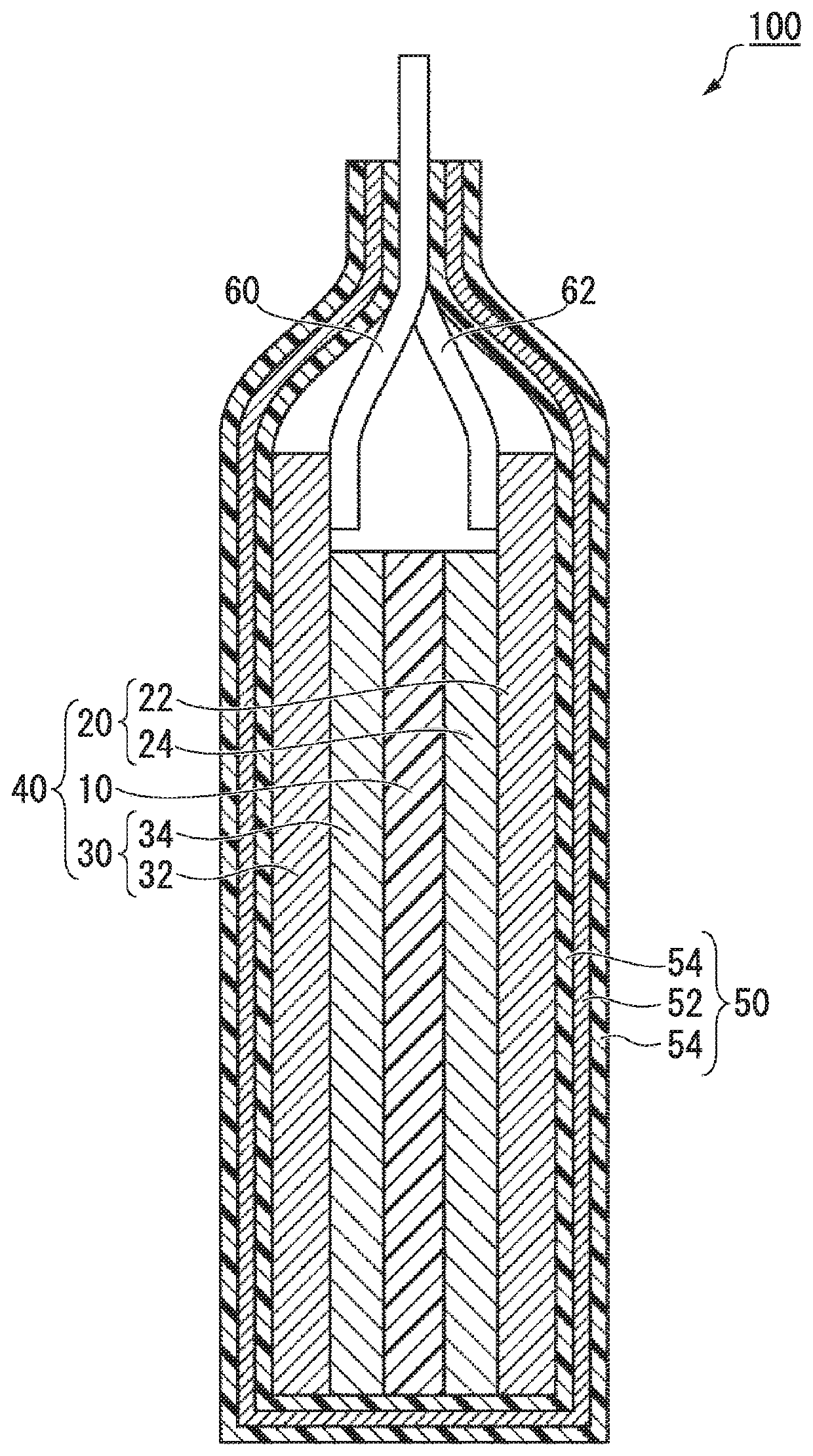Negative electrode for lithium ion secondary battery and lithium ion secondary battery
a secondary battery and lithium ion technology, applied in the manufacture of final products, cell components, electrochemical generators, etc., can solve the problems of insufficient achieve prevent precipitation of li, and excellent input and output characteristics.
- Summary
- Abstract
- Description
- Claims
- Application Information
AI Technical Summary
Benefits of technology
Problems solved by technology
Method used
Image
Examples
example 1
[0108]A commercially available artificial graphite was used as a raw material, and the raw material was pulverized using a planetary ball mill (model PM200 manufactured by Retsch Co. Ltd.) at a rotational speed of 500 rpm of the planetary ball mill. Then, a particle size distribution was adjusted using an air classifier, and D10, D50, and D90 were set to 2 μm, 18 μm, and 42 μm in that order. Here, D10, D50, and D90 were a particle size (particle diameter) at an accumulation of 10%, a particle size at an accumulation of 50%, and a particle size at an accumulation of 90%, respectively, in a particle size distribution curve with a horizontal axis that represents a particle size and a vertical axis that represents cumulative %.
[0109]Next, a mechanochemical treatment was performed on the obtained pulverized raw material using a Mechanofusion (manufactured by Hosokawa Micron Co. Ltd.). That is, three forces: compressive stress, shear stress, and impact, were applied. In this case, a load ...
examples 10 to 17
[0120]In Example 10, a 0.1% sodium carboxymethyl cellulose (CMC) solution was sprayed onto carbon particles obtained under the same conditions as in Example 9 so that an adhesion amount thereof was 4% with respect to the weight of the carbon particles. Next, a negative electrode was obtained under the same conditions as in Example 9 except that carbon particles obtained by heating carbon particles to which CMC was adhered at 1000° C. in an inert atmosphere (surface-treated carbon particles) were used.
[0121]Examples 11 to 17 differed from Example 10 only in that adhesion amounts of a 0.1% CMC solution with respect to the weight of carbon particles were different.
examples 18 to 20
[0122]In Example 18, in a particle size distribution (particle sizes of D10, D50, and D90) of carbon particles obtained under the same conditions as in Example 9, particle sizes of D10, D50, and D90 were adjusted to 4 μm, 17 μm, and 32 μm using an air flow type classifier.
[0123]Examples 19 and 20 differed from Example 18 only in adjustment of the particle size distribution.
PUM
| Property | Measurement | Unit |
|---|---|---|
| pore size distribution | aaaaa | aaaaa |
| pore size | aaaaa | aaaaa |
| pore size | aaaaa | aaaaa |
Abstract
Description
Claims
Application Information
 Login to View More
Login to View More - R&D
- Intellectual Property
- Life Sciences
- Materials
- Tech Scout
- Unparalleled Data Quality
- Higher Quality Content
- 60% Fewer Hallucinations
Browse by: Latest US Patents, China's latest patents, Technical Efficacy Thesaurus, Application Domain, Technology Topic, Popular Technical Reports.
© 2025 PatSnap. All rights reserved.Legal|Privacy policy|Modern Slavery Act Transparency Statement|Sitemap|About US| Contact US: help@patsnap.com

